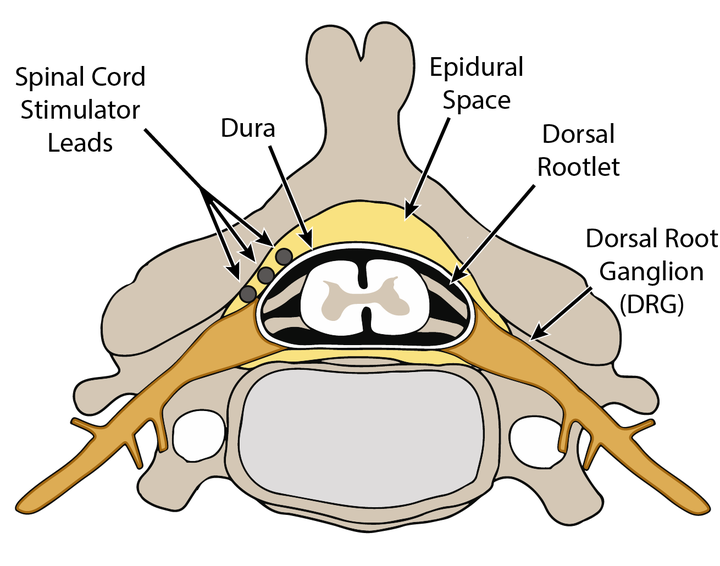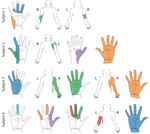Sensory restoration via SCS
 Schematic of spinal cord stimulation electrode placement
Schematic of spinal cord stimulation electrode placement
Individuals with amputations consistently state that the lack of somatosensory feedback from their prosthetic device is a significant problem that limits its utility and is often a primary cause of prosthesis abandonment. In the case of upper-limb amputations, the absence of somatosensory feedback particularly affects the ability to generate the finely controlled movements that are required for object manipulation. Although sophisticated myoelectric prostheses with multiple degrees of freedom are becoming in- creasingly available, their potential is limited because they provide little or no somatosensory feedback. In fact, body-powered devices are often preferred because of the feedback they provide through their harness and cable system. Partially addressing this limitation, advanced robotic prosthetic arms have been designed with embedded sensors that could be harnessed to provide somatosensory signals to a neural interface. Thus, developing a robust and intuitive means to deliver somatosensory information to the nervous system is an important endeavor to ensure the adoption and use of the latest advancements in prosthetics.
Spinal cord stimulation (SCS) systems are an FDA-approved, commercially available technology that could potentially be used to restore somatosensation. SCS leads are currently implanted in approximately 50,000 patients every year in the USA to treat chronic back and limb pain. As such, these devices provide an attractive option for widespread deployment of a neuroprosthesis than can evoke somatosensory percepts from distal aspects of the amputated limb, including the hand and fingers. The goals of the study were to demonstrate the feasibility of lateral SCS to restore somatosensation in upper and lower limb amputees to guide technical development for future studies that will include full implantation of SCS leads and stimulators.

